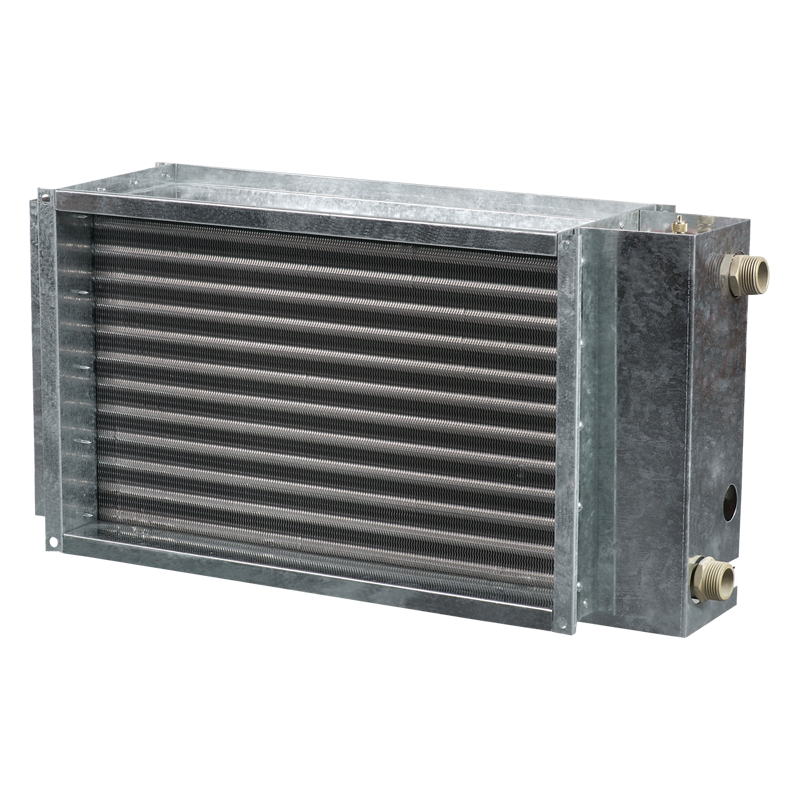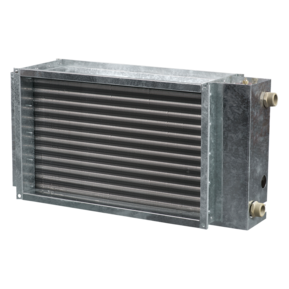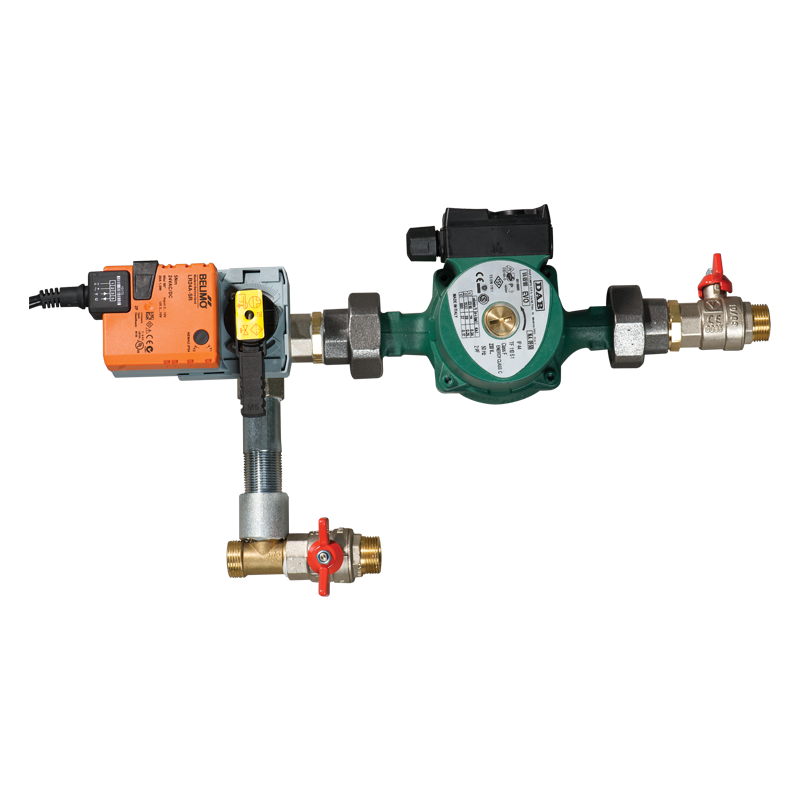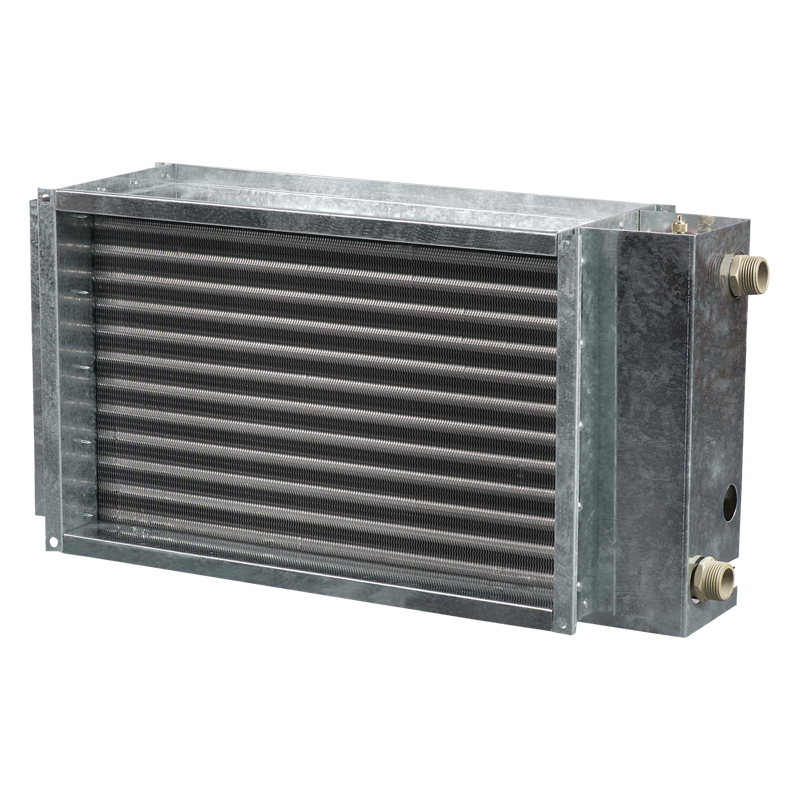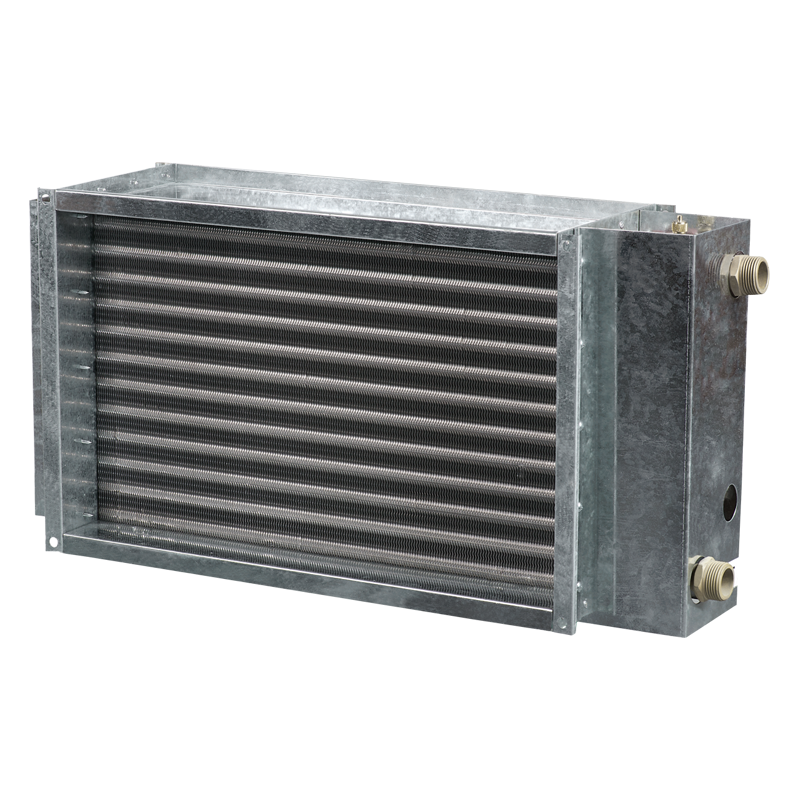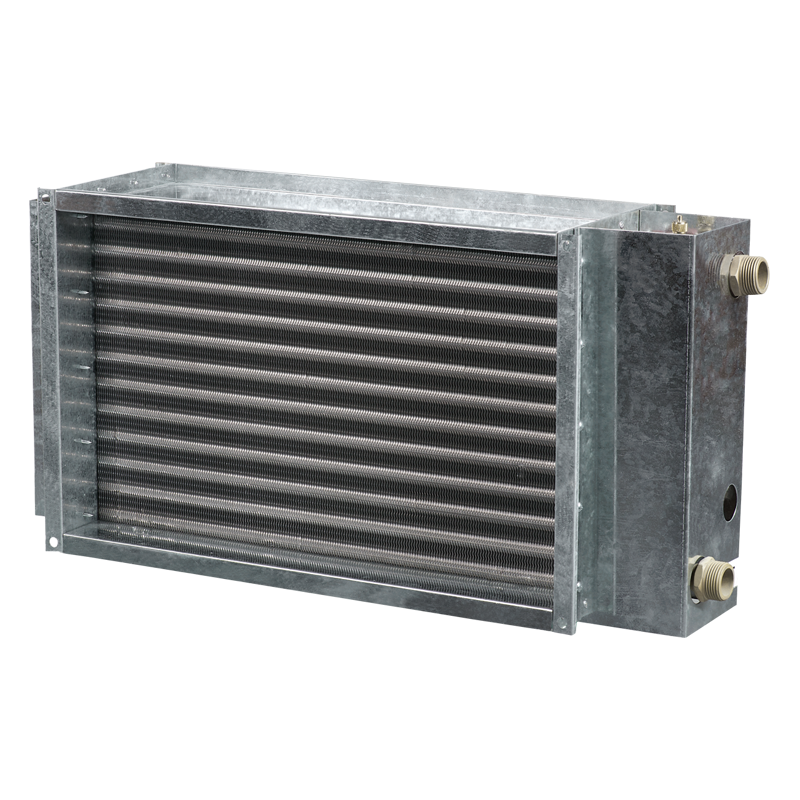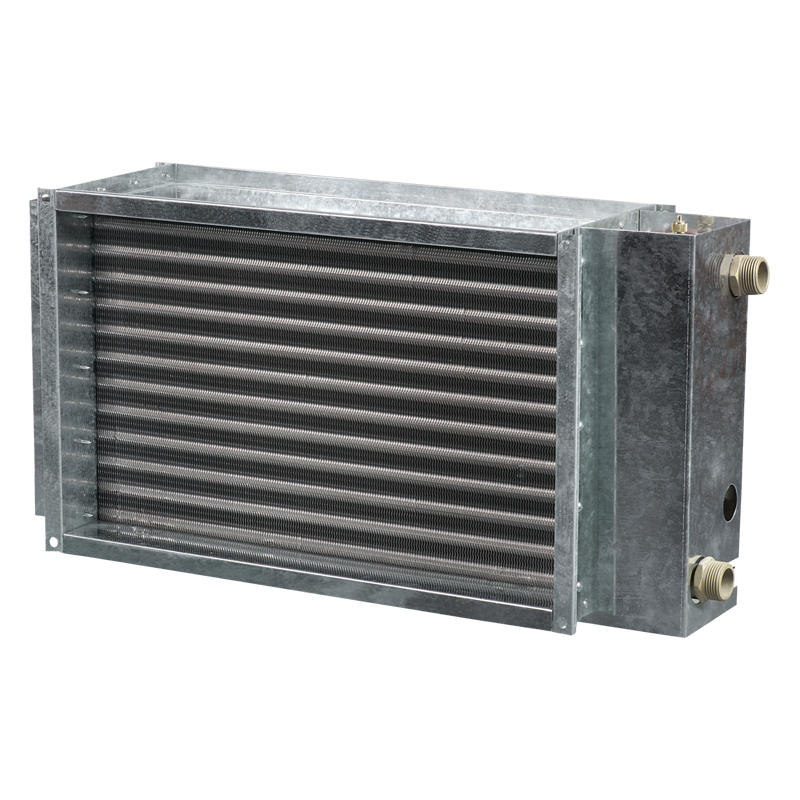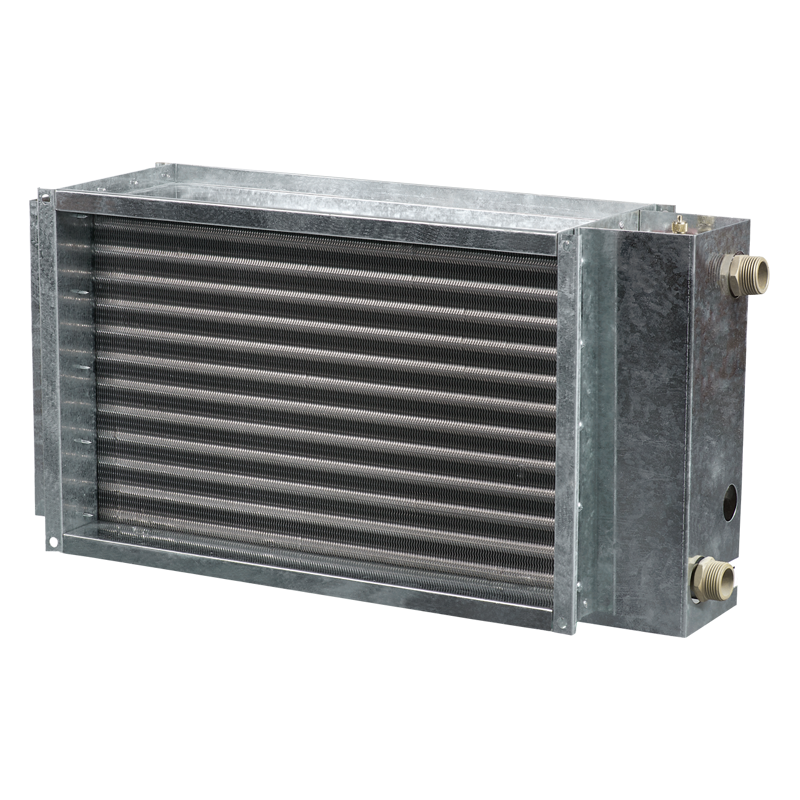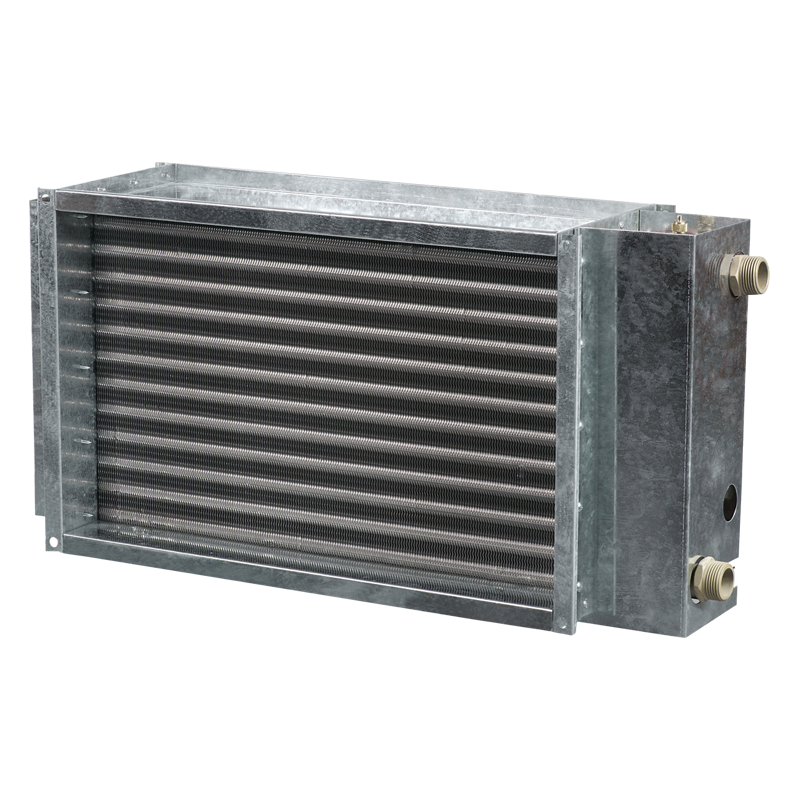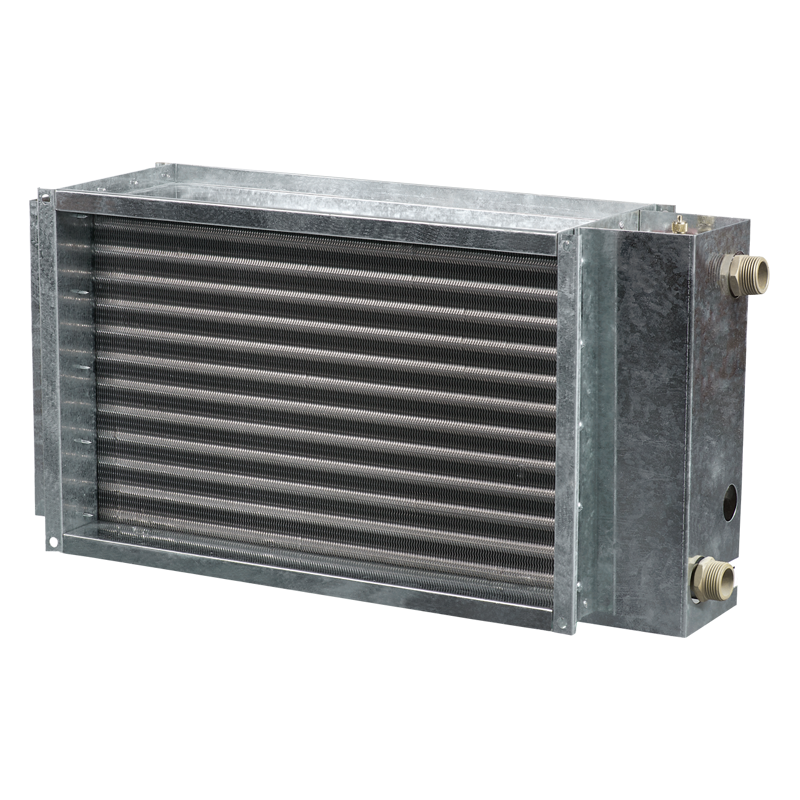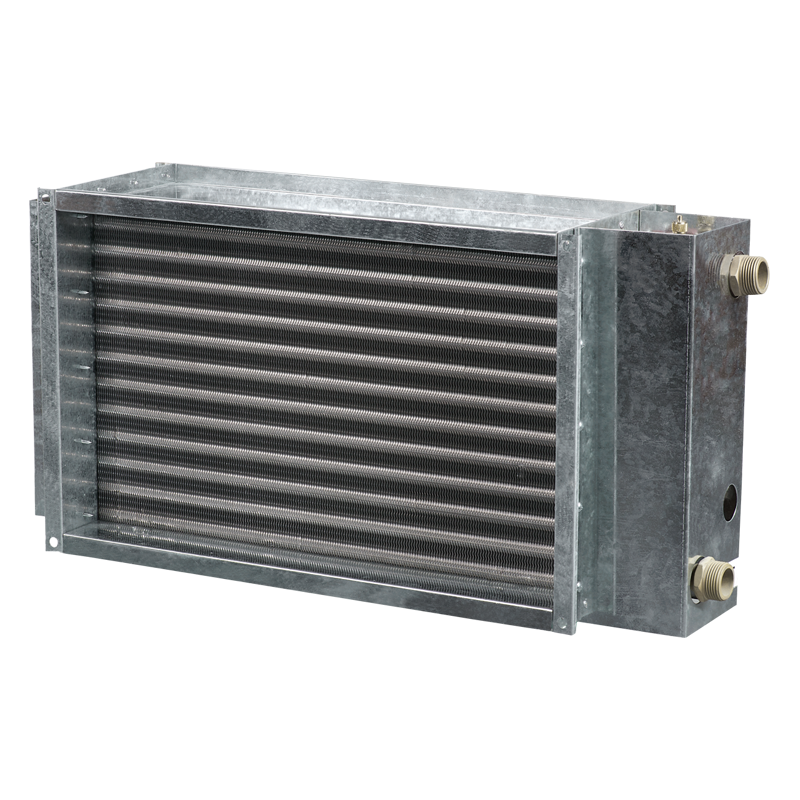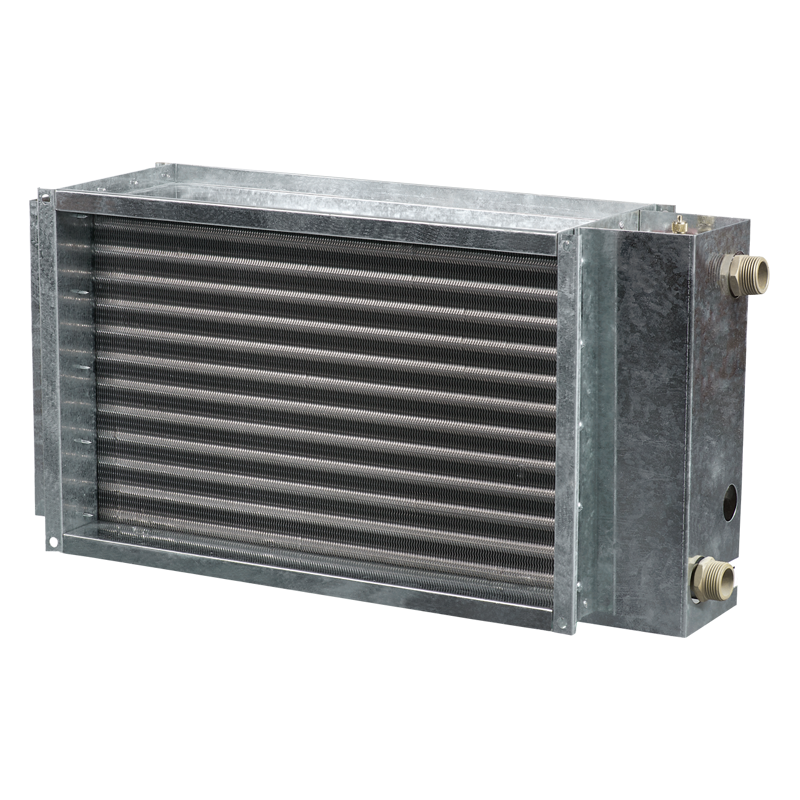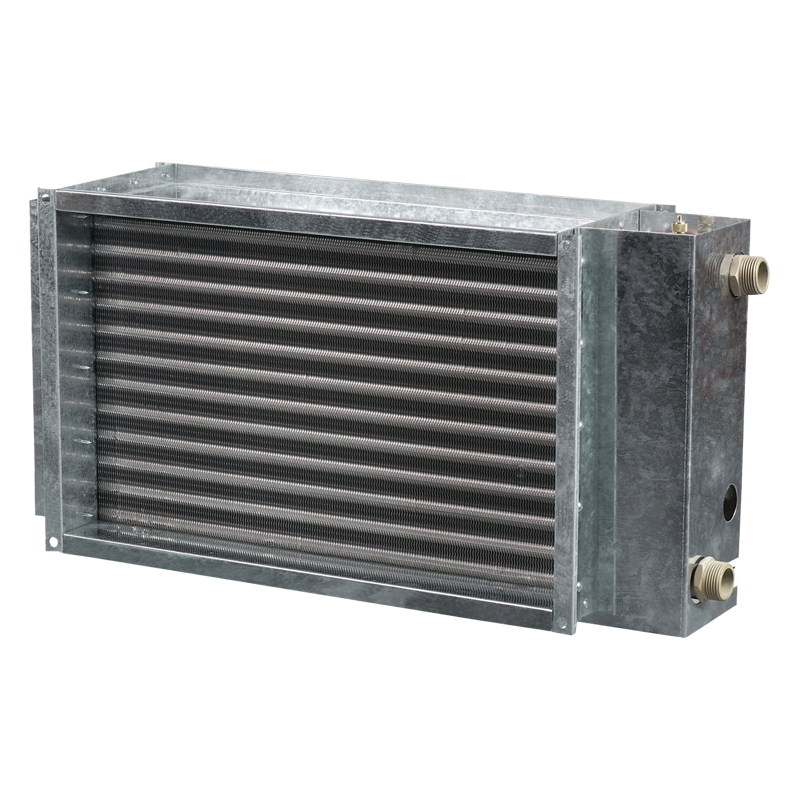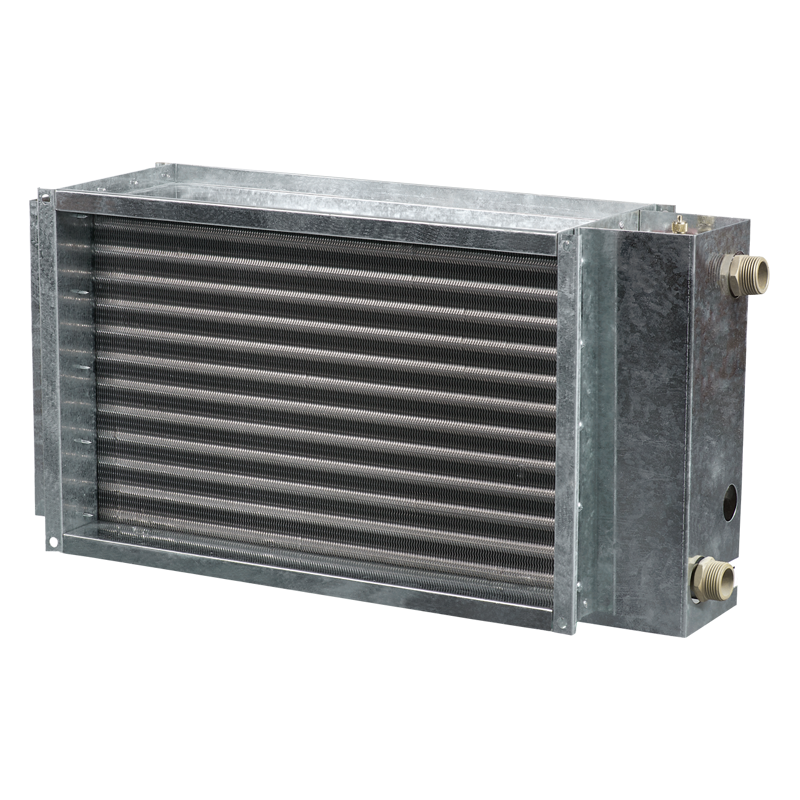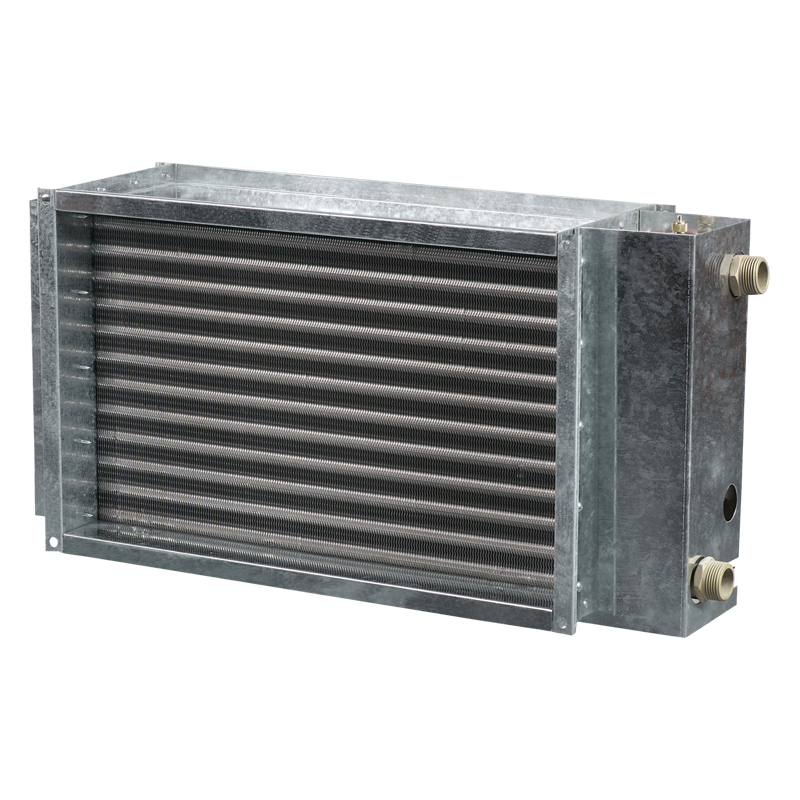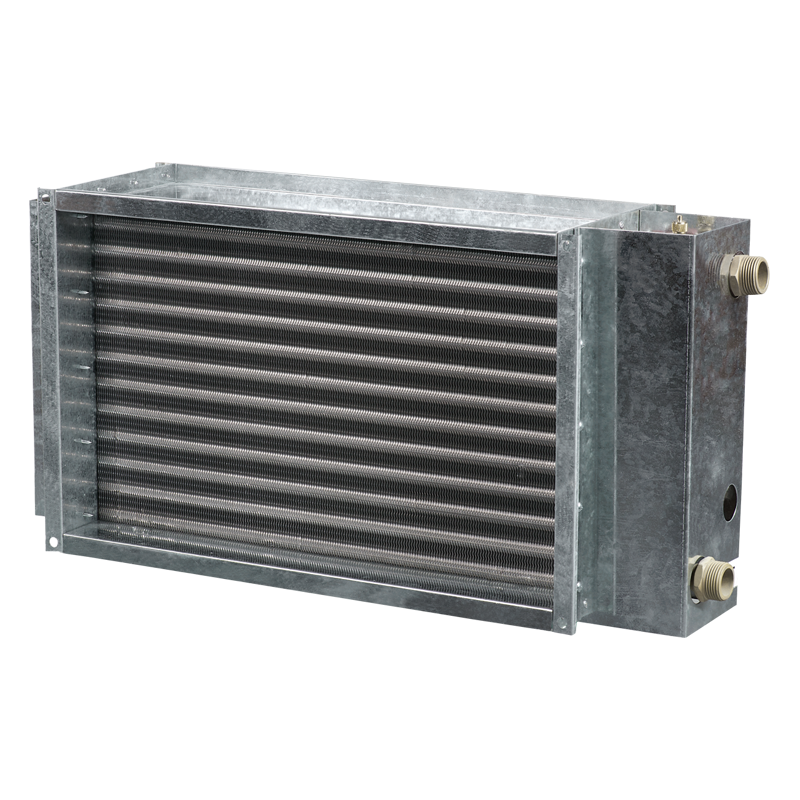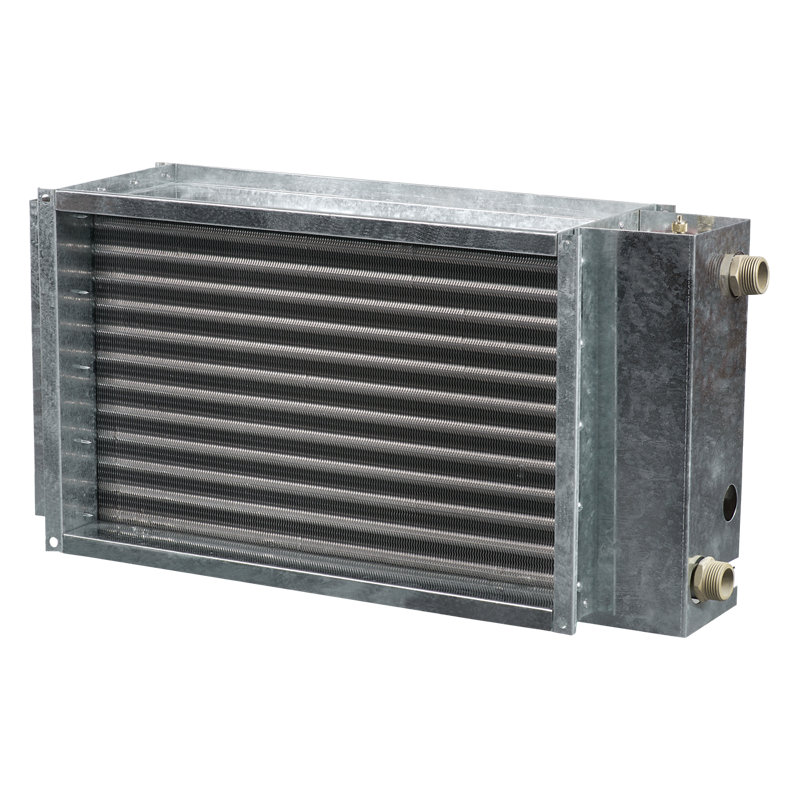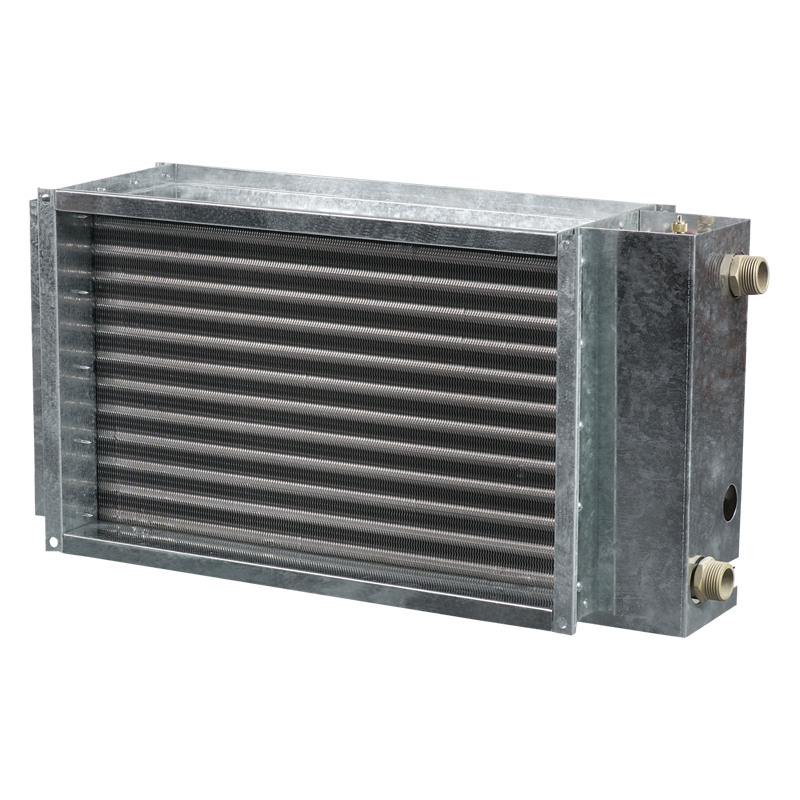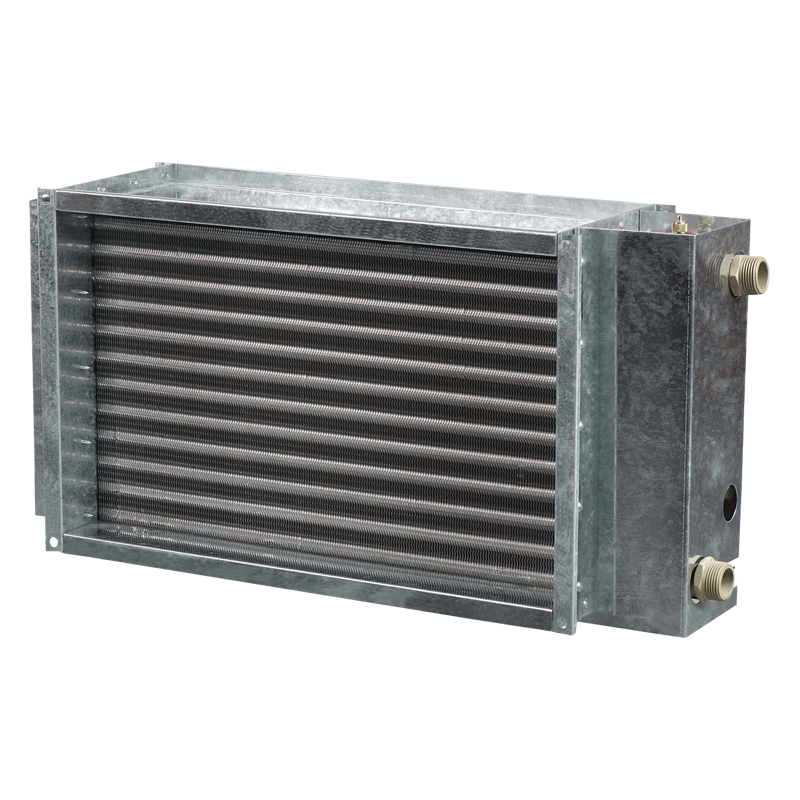VENTS NKV 800x500-2
- Description
- Characteristics
- Downloads
- Dimensions
- Additional diagrams
- Legend
| APPLICATIONS |
|
Duct water heaters are designed for heating of supply air in rectangular ventilating system and are applicable in supply or supply and exhaust units. |
| DESIGN |
|
The heater casing is made of galvanized steel, the manifold is made of copper tubes and the heat exchange surface is made of aluminium plates. The heaters are available in 2, 3 or 4 rows modifications and designed for operation at maximum operating pressure 1,6 MPa (16 bar) and maximum operating temperature +100°С. The exhaust manifold of the heater has a branch pipe for submersible temperature sensor or iicng protecting device. The heater has a nipple to provide the system deaeration. |
| MOUNTING |
|
The heater design ensures its mounting by means of a flange connection. The water heater can be installed in any position to enable its deaeration. The air stream shall match the pointer on the heater. The heater shall be installed in such a way as to enable the uniform air distribution along the entire cross section. The air filter shall be installed at the heater inlet to provide protection against dust and dirt. The heater can be installed both at the fan inlet or outlet. If the heater is located at the fan outlet the air duct length between the heater and the fan shall be at least 1-1.5 m to ensure the air flow stabilization as well as permissible air temperature level inside the fan. The heater shall be connected on the counterflow principle, otherwise its efficiency can drop by 5-15%. All the nomographic charts in the catalogue are valid for such connection. If waters serves as a heat transfer agent the heaters are designed for indoor installation only. For outdoor installation use antifreeze mixture (i.e. ethylene glycol solution). To ensure the correct and safe heater operation use the automation system that provides the complex control and freezing protection:
|
 |
 |
| Connection against air flow | Connection along air flow |
Air pressure loss in the water heaters NKV
NKV rectangular series

| Parameter |
NKV 800x500-2 |
Measurement unit |
|---|---|---|
| Weight | 36.5 | kg |
| Number of water coil rows | 2 | - |
Rectangular duct size  |
800х500 | mm |
| Heating | water heating | - |
| Width | 800 | mm |
| Height | 500 | mm |
| Duct | for rectangular air ducts | - |
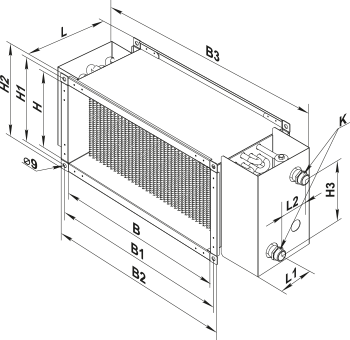
| Parameter | Value | Measurement unit |
|---|---|---|
| B | 800 | mm |
| B1 | 820 | mm |
| B2 | 840 | mm |
B3 
|
965 | mm |
| H | 500 | mm |
| H1 | 520 | mm |
| H2 | 540 | mm |
H3 
|
450 | mm |
| L | 200 | mm |
| L1 | 36 | mm |
L2 
|
47 | mm |
K 
|
G 1'' | in |

How to use water heater diagrams:
Air Speed. Starting from 5500 m3/h on the air flow scale draw a vertical line 1 till the air speed axis. It makes 3.8 m/s.
- Supply air temperature. Prolong the line 1 up to the point where it crosses the outside air temperature (blue curve), e.g. -10°C; then draw a horizontal line 2 from this point to the left till crossing water in/out temperature curve (90/70 °C). From this point draw a vertical line 3 to the supply air temperature axis on top of the graphic (+24.5°С).
- Heating coil capacity. Prolong the line 1 up to the point where it crosses the outside air temperature indicated as red curve (e.g., -10°С) and draw a horizontal line 4 from this point to the right to the intersection of water in/out temperature curve (e.g., 90/70 °С). From this point draw a vertical line 5 up to the scale of heating coil capacity (73.0 kW).
- Water discharge. Prolong the line 5 down to water discharge axis at the bottom of the graphic 6 (0.9 l/s).
- Water pressure drop. Draw the line 7 from the point where line 6 crosses the black curve to the pressure drop axis (11.0 kPa).
| Series | Flange designation (WxH) [mm] | Number of water coil rows | ||
|---|---|---|---|---|
| NKV |
400x200; 500x250; 500x300; 600x300; 600x350; 700x400; 800x500; 900x500; 1000x500 | 2; 3; 4 |






 Domestic fans
Domestic fans  Industrial and commercial fans
Industrial and commercial fans  Single-room ventilation systems with heat recovery
Single-room ventilation systems with heat recovery  Air handling units
Air handling units  Air heating systems
Air heating systems  Smoke extraction and ventilation
Smoke extraction and ventilation  Air sterilizers
Air sterilizers  Accessories for ventilating systems
Accessories for ventilating systems  Electrical accessories
Electrical accessories  Ventilation ducts and fittings
Ventilation ducts and fittings  Air distribution components
Air distribution components  Ventilation kits and vents
Ventilation kits and vents 